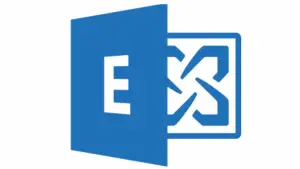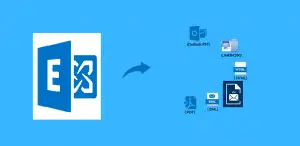Microsoft Exchange Server creates the EDB file, which is an Exchange Database file. It is a file format that is exclusively supported by the Windows operating system.
Furthermore, the exchange .EDB File is used to hold all data objects in a mailbox, including emails, calendars, contacts, notes, tasks, and so on. Exchange Server makes use of the Extensible Storage Engine to access the data (ESE).

It is the primary storage location for Exchange Server mailbox data. Every communication sent or received by Exchange Server is saved in the EDB file. Apart from that, a b-tree structure on a single client-server architecture is used to create the .EDB file. The primary goal of design is to provide fast access to numerous pages at the same time.
What is EDB File?
EDB is a database file used by Microsoft Exchange Server to hold all of the items in a mailbox (task, contacts, emails, calendars, journal and notes). The Exchange database (EDB) file stores all communication between the organization and Exchange Server. All of the files are organized in a B-tree layout, with a top level node and multiple child nodes like Priv1.edb and Pub1.edb.

EDB (Extensible Database Format)
There are no open/official EDB file format specifications that can be used as a reference. Reverse engineering the file format has made some progress, leading in partial specs decoding. An EDB file is made up of the following components:
- File Header – Information about database file headers.
- Pages with Fixed Sizes – Contains the database, which is made up of tables and indexes.
EDB File Structure in Exchange
The EDB file is based on a basic relational database structure called Balanced Tree Database Structure, or B-tree for short, that has been used in the computer industry for many years. The B-tree structure is a fundamental data structure. The EDB database’s internal structure is not well suited to storing huge attachments that clients access in a continuous stream. EDB is a typical database with a set of four-kilobyte pages. ESE will let each page to store over 200 page pointers per 4KB page in its database structure. The standard B+ Tree implementation is used by Exchange Server’s ESE. The database, regardless of the Server roles, is made up of a number of files. The following is the primary file:
- EDB (Exchange Database File): The EDB file is where all of the data is stored on the Exchange Server. Based on the ESE database design, it has a capacity limit of 16 TB, however the real database size restriction that you enforce should be significantly smaller.
- (TMP.EDB): The temporary database is utilized for procedure transactions while the EDB file is being committed.
- (Exx.CHK): The E00. CHK file keeps track of the database’s checkpoint. This Checkpoint file keeps track of the most recent transaction log file that has been committed.
Aspects of the EDB File Format
- Exchange Server uses the Extensible Storage Engine, often known as JET Blue, to store and extract EDB file data.
- Because it stores the messages supplied by MAPI clients, the exchange .EDB file is also known as a MAPI-based database (Outlook).
- To provide easy access to the Exchange database, numerous B-trees are used.
- To store data, the Exchange Server uses the priv1.edb file for private folders and pub1.edb for public folders. Furthermore, multi-media files are saved as .STM files (streaming database).
- In Exchange Server 2007/2010, mailbox database .EDB was introduced in place of priv1.edb and Public Folder Database .EDB was introduced in place of pub1.edb. The STM file extension was, however, removed from Exchange 2007.